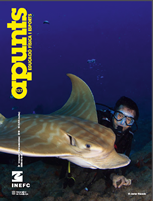Stretching Programme with Neuromuscular Proprioceptive Facilitation. Hamstring Flexibility in Football Players
Article Sidebar

Main Article Content
The objective of this study was to determine the longterm effect of a stretching program using the proprioceptive neuromuscular facilitation technique (PNF) on the hamstring flexibility of pre-juvenile football players. A quasi-experimental study was carried out with 20 young football players. Their lower limbs were randomized by assigning one to the control group and the other to the experimental group. The control group underwent a static- passive stretching programme, while the experimental group received a stretching program using the PNF contraction-release technique. Hamstring flexibility was assessed through the passive knee extension test. The difference between groups were assessed through homogeneity
tests for independent samples (Student’s t-test) and for related samples (Wilcoxon signed rank test). In
both the control and experimental groups, the post-test measures of the popliteal angle improved very little compared to the pre-test. In none of the limb groups was the difference statistically significant (p > .05). The measure of popliteal angle change was 0.4° higher in the control group, although this small difference between groups was not statistically significant (p = .829). In conclusion, there were no changes in the popliteal angle between limbs where the static-passive stretching programme was applied compared to stretching with PNF. Neither program was shown to be effective in increasing hamstring flexibility in the long term.